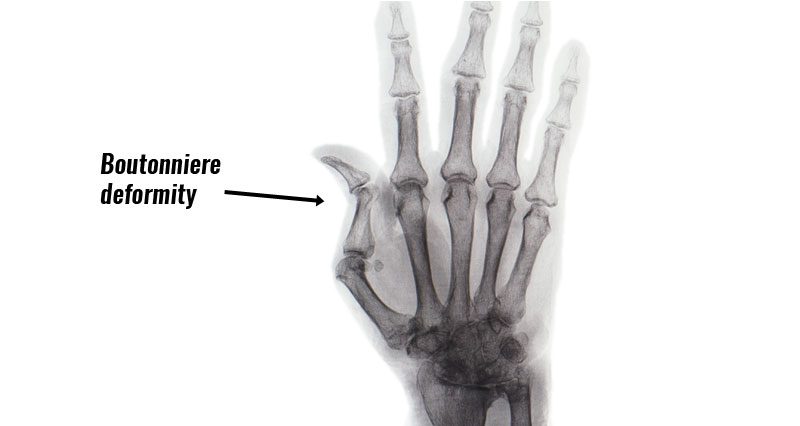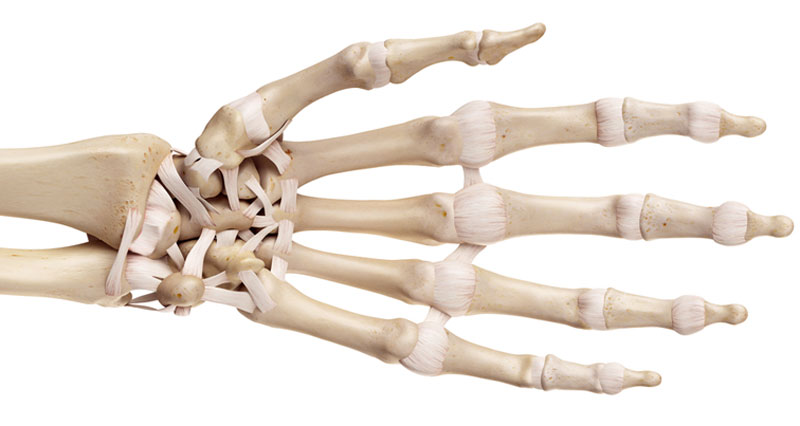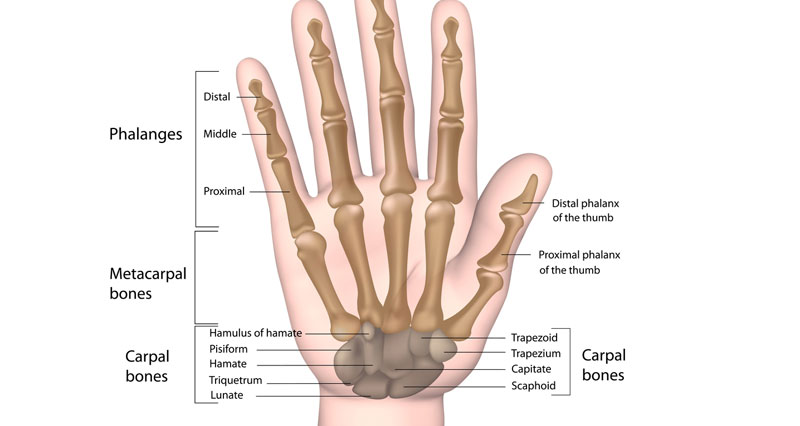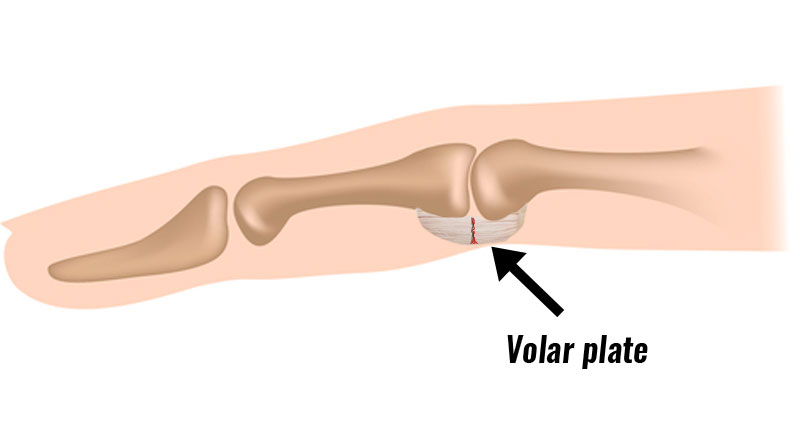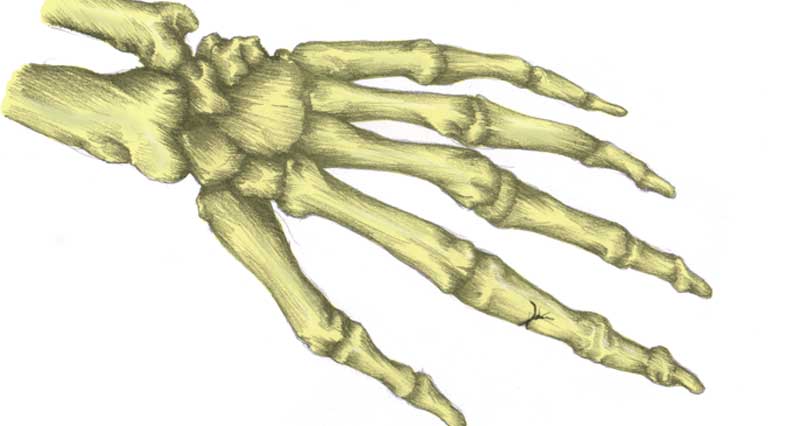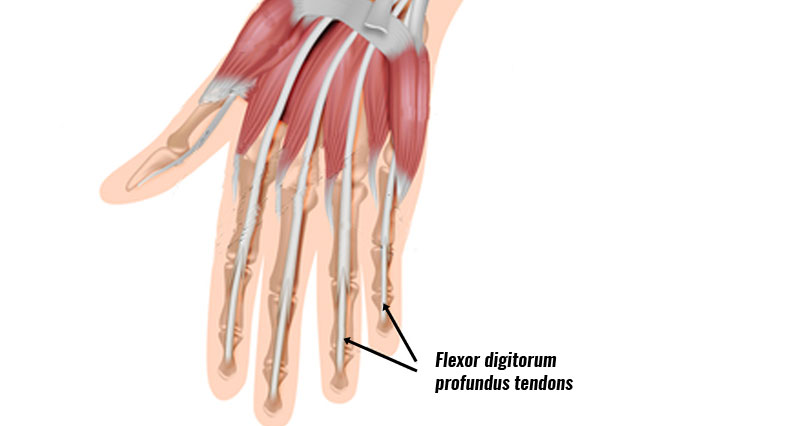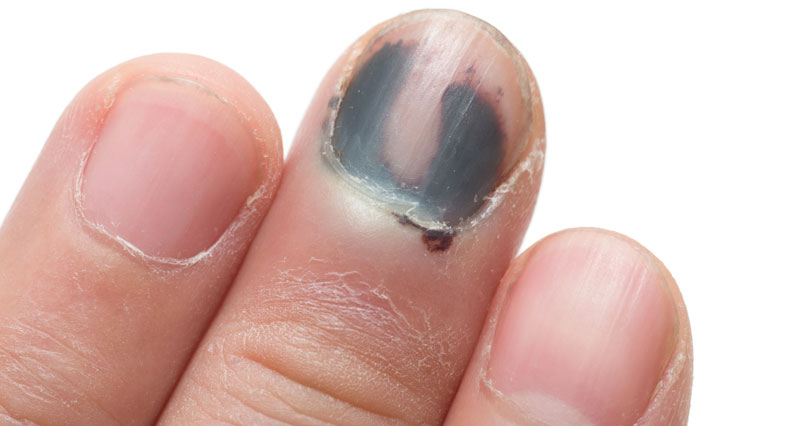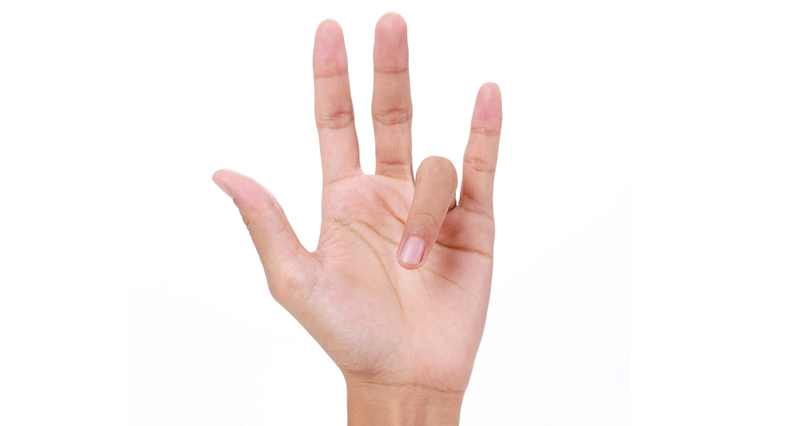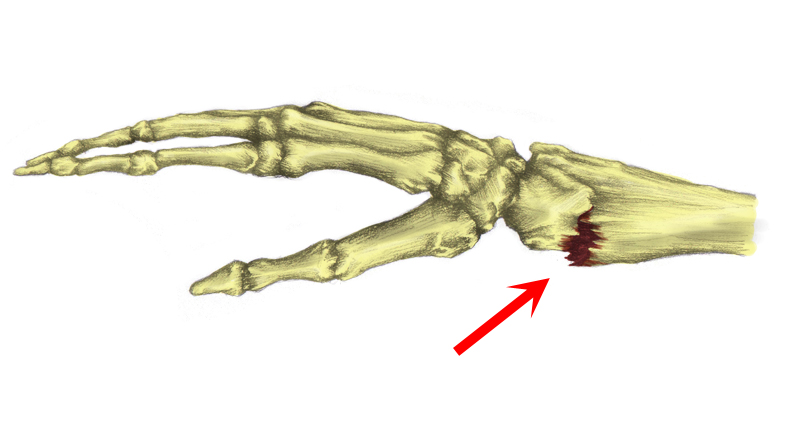A boutonniere deformity or buttonhole deformity is an injury to a tendon in one of the fingers, resulting in a deformed shape. This usually occurs after an impact on a bent finger.
Boutonniere deformity symptoms
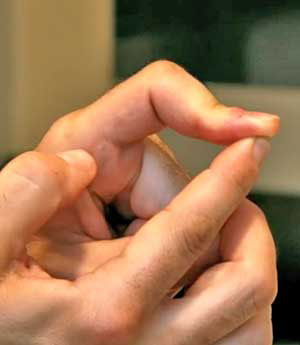
If you have a Boutonniere deformity you are unable to straighten the middle finger joint or bend the end joint. Symptoms also include:
- Pain at the time of injury
- Tenderness on top of the middle finger
- Swelling.
Causes
It usually occurs after a direct impact on the middle finger bone. Your middle finger joint forcefully flexes, causing a rupture of the extensor tendon.
Less frequently, a cut to the upper surface of the fingertip may sever the attachment point of the tendon to the bone.
Rheumatoid arthritis is also a cause in approximately one-third of people with Boutonniere deformity.
Treatment of a Boutonniere deformity
If caused by a traumatic injury rest the finger and apply cold therapy to ease bleeding and swelling. Visit a Doctor as soon as possible.
After an examination, the doctor can provide a splint to keep the finger straight. This helps the tendon to heal in the correct position. They may also provide anti-inflammatory medication.
Surgery
Consultant wrist and hand surgeon Mr Elliot Sorene explains Boutonniere’s Deformity.
If the tendon is severed, or your finger fractures then you will need surgery to reattach the tendon or pin the fractured bones. Also to straighten the finger.
It is then put in a splint to allow it to heal. Exercises may be given once the splint is removed to increase the strength of the finger extensor muscles.
